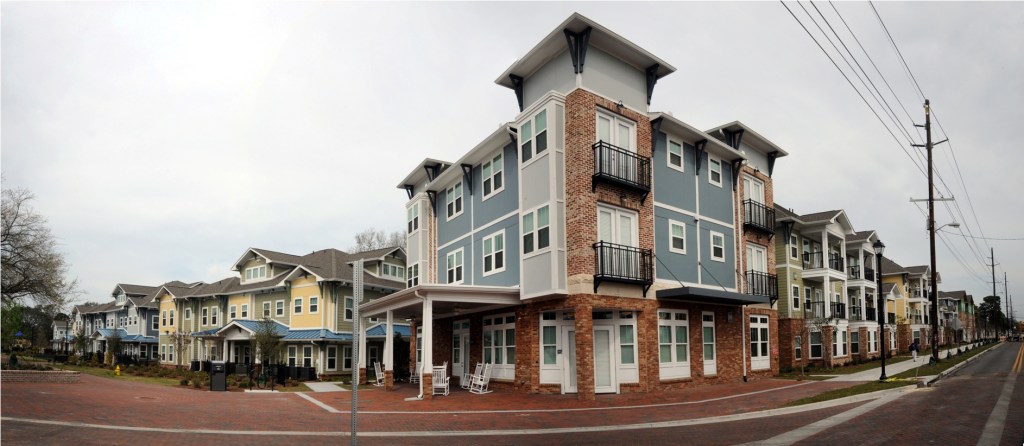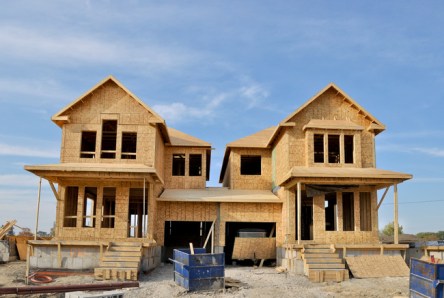Philadelphia Housing Authority (PHA) is the most recent addition to the growing list of public housing organizations to ban smoking. Dozens of public housing authorities throughout the US, as well as private companies, have initiated smoking bans for residential units, common spaces, and offices. The policies are prompted by financial and health concerns. A report by the Centers for Disease Control and Prevention reveals that states could save $500 million per year by implementing a ban on smoking. By eliminating smoking on the premises, owners could save on the costs of cigarette-related fires, building renovations, and states could save on health care expenses related to smoking and secondhand smoke exposure. In separate studies, the CDC estimates that 44 million American adults smoke cigarettes, exposing them to the nation’s leading cause of preventable death. The habit can cause rheumatoid arthritis, colorectal cancer, and diabetes in addition to exacerbating asthma, respiratory diseases, and cardiovascular diseases. Secondhand smoke adversely affects the growth of children and the health of seniors. Last week, PHA became the largest housing authority to adopt a smoke-free policy. The authority’s 80,000 residents will be under a smoking ban beginning August 5, 2015. Current residents are not expected to quit cold turkey, nor will residents face eviction if they are found in violation of the band. Instead, the housing organization, with support from Department of Housing and Urban Development (HUD), has designated $100,000 for cessation programs to help residents with compliance. After nine months with this format, PHA will assess data collected on existing residents regarding their violations and participation in cessation classes. How that data will be used is unknown. Leases signed after August 5, as well as select rehabilitated units, will be subject to termination after the fourth violation of the smoking ban....
Silent Victims
Housing Young + Old
Awareness of the affordable housing crisis has grown exponentially inside of industry circles. Unfortunately, public awareness is still woefully low and solutions to the problem have yet to manifest. A new organization lead by Ron Terwilliger will collect data that can guide policymakers towards crisis resolution. Simultaneously, the data will help to protect the most vulnerable victims of the affordable housing crisis, America’s youth and seniors. “A legacy of the great recession, the rental affordability crisis is often overlooked by policymakers, ignored by the media, and underestimated, at best, by the general public,” announced Ron Terwilliger, former CEO of Trammell Crow Residential. Terwilliger reports that three-fourths of federal spending for housing supports homeowners, who generally have more than twice the income of renters. In contrast, federal rental assistance remains underfunded and only one-fourth of those in need are eligible for support. Of those in need, a growing number are seniors and children. Many people who cannot secure affordable housing face homelessness. Child homelessness is at a historic high. America’s Youngest Outcasts reports that homelessness impacts nearly 1 in every 30 children in the nation. This denotes an 8 percent increase in child homelessness between 2012 and 2013. The study ranked all 50 states according to the number of homeless children reported in the area. Causes for child homelessness include high poverty rates and a lack of affordable housing. “Living in shelters, neighbors’ basements, cars, campgrounds, and worse—homeless children are the most invisible and neglected individuals in our society,” begins Dr. Carmela DeCandia, director of The National Center on Family Homelessness. “Without decisive action now, the federal goal of ending childhood homelessness by 2020 will soon be out of reach.” Seniors are also silent victims of the affordable housing crisis. The number of seniors...
How Seniors Search
For housing and health
Research funded by Google sheds light on how seniors search for housing for themselves and their aging parents. The results are helping senior housing experts improve marketing strategies and concentrate their efforts on what truly matters to America’s aging population. In October 2014, Google issued a survey to 2,000 Baby Boomers between the ages of 50-58 and 59-68. Those who participated in the survey are among the 75 percent of seniors who use search engines to learn more about senior housing. Survey respondents provided insights on how they used search engines to find dwellings and care providers, as well as features that they seek out when filtering through their options. Google recently released results from the survey at the What’s Next Boomer Business Summit in Chicago: When searching for housing for themselves, respondents used keywords such as “independent living,” and “55+ active communities.” They sought housing with features that promoted an engaging and social lifestyle such as group events, excursions, pet accommodations and complimentary transportation. Younger Boomers are increasingly tech savvy. They desire self-care tools that allow them to manage their own health and wellbeing electronically; 25 percent of respondents regularly use EHRs to manage their health. They tended to search for wearable devices that can help them monitor their vital signs and fitness activities. While self-care is important, it does not overshadow Boomers’ interest in quality personnel onsite. One-third of respondents expect to work with a care manager through the senior housing community who can help them manage their health and wellness options. When searching for housing on behalf of their parents, respondents searched using terms like “skilled nursing,” or “assisted living communities.” Communities that offered specialized care, a low staff-to-resident ratio, and proximity to emergency care facilities ranked high on their lists....
HUD Funding
Relief in Sight
In positive news for the public housing realm, the U.S. Department of Housing and Urban Development has received $49.3 billion in gross discretionary funding. It’s a $4 billion increase over FY 2014. The resources will be allocated to rental assistance vouchers, assistance for homeless and at-risk families, community improvement, and additional training for the Public Housing Authority staff. A notable portion of the funds will be used to compensate for 67,000 Housing Choice Vouchers lost during the sequestration in 2013 and a $25.6 billion deficit between FY 2014 and FY 2015. There are few new initiatives. $35 million will be divided between new affordable housing for seniors and 700 new households with supportive services for persons with disabilities. The bulk of funding is focused on the continuation and enhancement of existing programs for vulnerable populations. $332 million will support the Housing Opportunities for Persons with AIDS program. First nation tribes will receive $748 million towards housing and community development. $2.5 billion will be channeled to the Homeless Assistance Grants, which reduce homelessness among families and veterans. Additional housing assistance comes in the form of adjustments for FHA mortgage insurance premiums. The new parameters will permit access to credit for 250,000 new homebuyers. $4.7 million low-income families will receive rental housing assistance. A grant of $50 million will transform 25,000 public housing units into project-based rental assistance contracts that can further spark capital investment. Communities will receive an additional boost of community improvement through Choice Neighborhoods. The organization receives $250 million to reconstruct impoverished neighborhoods as mixed-income communities with employment and enrichment opportunities for residents. Overall, the budget is a $4 billion increase over the budget for last year, but is it enough? HUD Secretary Julián Castro believes that it is a great start. “By...
Ending Homelessness
HUD-VASH
The U.S. Department of Housing and Urban Development (HUD) and the U.S. Department of Veterans Affairs (VA) recently announced more than $62 million in aid for homeless veterans. The funds will assist over 9,000 servicemen and women with permanent housing, dedicated case workers, and medical services. Following a year of budget cuts for HUD, the announcement comes as welcomed news. The awards follow data gathered from thousands of cities throughout the US that depict a lingering need for services; though the population of homeless veterans has declined by 33 percent, the report suggests that there are still at least 49,933 homeless veterans remaining in the US today. HUD.gov reports that the HUD-VASH collaboration will allot “$57 million to support 8,276 Tenant-Based Vouchers for rental units in the private market, and $5 million for 730 Project-Based Vouchers (PBV) for existing units or new construction in specific developments.” The program has experienced significant success in the past. Since 2008, more than 74,000 homeless veterans have secured permanent housing through HUD-VASH. Each veteran received a personal assessment by VA Medical Centers (VAMCs) before obtaining a voucher for rental assistance. Veterans who opt into the HUD-VASH program contribute less than 30 percent of their income towards housing. They are also provided with comprehensive case management and access to clinical and career services. “It is unacceptable that after their service and sacrifice, too many of our veterans find themselves living on our streets and in our shelters,” says Secretary Castro. “We’ve made significant progress reducing homelessness among veterans by a third in just four years, and these vouchers will continue to help communities build on these gains, providing targeted assistance to those in need to ensure that every veteran has a home.” President Obama has requested an additional $75...
Ebola in America
Aware and Prepared
With the Center for Disease Control (CDC) estimating a potential 1.4 million Ebola hemorrhagic fever cases in West Africa by January 2015 and countless more abroad, it’s worthwhile to investigate how property managers should handle any potential cases at properties in their area. Perspective While Ebola is a serious concern, it is far from a large-scale emergency outside of West Africa. Guinea, Liberia, and Sierra Leone have reported the most cases in 2014. To date, there have only been nine confirmed cases of Ebola in the US, with one fatality, six recoveries, and the remainder currently in recovery. That’s less than 1/2,000,000th of the population currently at risk. While it is a small percentage for sure, it’s not one to be ignored. Educating Residents Well-educated residents can make the most informed decisions about their own health and well-being. This is important because individuals know their travel history, social sphere, and can evaluate their own health much better than you can from the office. Post helpful information in a visible place within your leasing office: According to the CDC, “Ebola is only contagious if the person is experiencing active symptoms.” Active symptoms include fever (greater than 101.5°F), severe headache, muscle pain, weakness, diarrhea, vomiting, abdominal pain, and unexplained bleeding or bruising. These symptoms will occur anywhere from two to 21 days from exposure with most symptoms occurring within in the first week or so. Residents displaying multiple symptoms should contact health officials particularly if: The have traveled to the aforementioned West African nations within the last few weeks. They have experienced direct contact with the blood, excrement, saliva, urine, vomit, sweat, breast milk or semen of a person who is sick with Ebola. They have participated in a ritual (traditional burial) of a person who has died from...
Affordability Crisis
Hurting for housing
Every morning at 8am, the construction crews begin working on the neighborhood behind my home in an Atlanta suburb. The sounds of hammers, trucks, and lively music are a sign that the housing market is recovering. While these lots will make lovely homes for some, their $250,000+ price tags exclude buyers most in need of housing relief. The nationwide shortage of affordable housing is getting worse. There’s no housing shortage. Skylines receive new jewels every quarter as developers jump on the luxury high-rise trend. Even single-family builders are stretching their legs with post-recession vigor. Big spenders have an increasing number of options. Middle- and low-income families, however, are the ones scrambling to find shelter while making ends meet. There are two notable causes for the affordable housing shortage: the widening chasm between incomes and rents, and investors’ lack of interest in affordable housing. The gap between incomes and rents grows wider. Research conducted by the Joint Center for Housing Studies (JCHS) shows median incomes plummet by 13 percent between 2000 -2012. While incomes decreased, the population of extremely low-income renters doubled in less than a decade. Of renters making less than $15,000 per year, 24 percent reported hardships with lease payments. Rent—not transportation, electronics, or clothing—is continually absorbing a larger amount of American’s income. The lowest-income renters are scaling back on food, sacrificing about $100 each month to pay for housing. The JCHS study revealed that half of today’s renters spend more than 30 percent of their income on housing; one in four families spend more than 50 percent. A study by National Low Income Housing Coalition (NLIHC) places that percentage closer to 75 percent. Incomes shrink while rent rates are continuing to increase. From 2000-2012, median rents skyrocketed by 6 percent. Rising costs can’t dissuade renters. There aren’t many other options. The influx of post-recession renters to the market drives fierce competition, turning even the priciest, tiniest rentals into a battleground. In these cost wars, low-income renters have been left out of the negotiations. There simply aren’t enough affordable units to go around. NLIHC estimates that there are 10.1 million extremely low-income households and only 5.6 million housing units to accommodate them. Almost half of these household contain children and are at high-risk for homelessness if more housing is not created. But affordable housing has not been on the top of many agendas. In 2008, President George W. Bush initiated The National Housing Trust Fund. The fund would create, maintain, and renovate affordable rental housing communities. Though he gained support from both sides of the aisle, the trust never received funds. Affordable housing faces local setbacks as well. Some local governments and community groups refuse to approve affordable housing in their areas. Their concerns are rooted in antiquated views and stigmas surrounding affordable housing. Home Matters was created in 2013 to educate local powers about the new and improved face of affordable housing: eco-friendly, stylish neighborhoods that are rich with engaging community programs and increasingly self-sufficient tenants. Nearly 200 local and national organizations have joined forces under Home Matters. They hope to change public opinion about affordable housing and in turn increase support and funding for these vital...
Cost of Living Calculator...
HUD + DOT Make Relocation Easier
Relocating can be tough for tenants, particularly when they are moving to a new city or state. To ease the transition, The Department of Transportation and U.S. Department of Housing and Urban Development have created the Location Affordability Portal (LAP), a website equipped with tools that give a realistic idea of the costs associated with relocating to a different area. The portal also includes a variety of features that are useful to real estate and development professionals. The joint venture of HUD and the DOT came as a result of interesting findings: the average family spends nearly 50 percent on its income on housing and transportation. While housing costs are traditionally easy to calculate, transportation costs are not. By compiling user-entered information along with each department’s collected data, an easy-to-use portal has taken shape. Users now have access to a vast amount of national data. Users can simply type in the address of a residence and receive the calculation for housing and transportation costs. Families can determine whether it’s better to live and work in the city, live in the suburbs and commute to the city, or any other variation of housing and transportation options. Such a resource would have been incredibly helpful for Jeff Ratchford of Conyers, GA. He knew that he didn’t want to live in the city. He opted to live in a suburban community and commute to his workplace. By using public transportation, he received the best combination of what he wanted: a spacious home for his family at a great price, an acre lot, good schools, a peaceful neighborhood and an inexpensive commute. “We found the home and lot that we wanted and we were right where we wanted to be,” he recalls. For the first few years, Ratchford...
Multifamily Growth
Outperforming the Recession
Renter households increased from 34.1 percent in 2009 to 35.4 percent in 2011 according to a recent report released by the U.S. Census Bureau. A consistent pattern may be observed countrywide, with nearly a quarter of the metro areas seeing a rise in renting households, while less than 3.0 percent of the nation’s metro areas saw a decline. Continued urban population growth combined with a healthy job market and a change in occupant mindset has sparked the creation of a vigorous multifamily sector which has now become the engine behind the recovery of the real estate industry. The desire to retain mobility to pursue employment opportunities as well as a preference for urban lifestyles among many households is expected to support strong operations in the apartment market throughout 2013. A recent American Community Survey brief permitted the comparison of all 366 metro areas in the U.S. based on four characteristics of the rental housing stock: gross rent, gross rent as a percentage of household income, rental vacancy rates, and renter share of total households. The study found that the rental vacancy rates for the nation declined from 8.4 percent in 2009 to 8.2 percent in 2010 to 7.4 percent in 2011, indicating a tightening rental market. Nationwide, more than 2 in 5 renter households (44.3 percent) had housing costs that consumed 35 percent or more of their income. “While we saw a decrease in rental vacancy rates and pricing in some areas, the burden of rental costs on households increased across many parts of the nation,” said Arthur Cresce, assistant division chief for housing characteristics at the Census Bureau. “Factors such as supply and demand for rental housing and local economic conditions play an important role in helping to explain these relationships.” Only 11...









